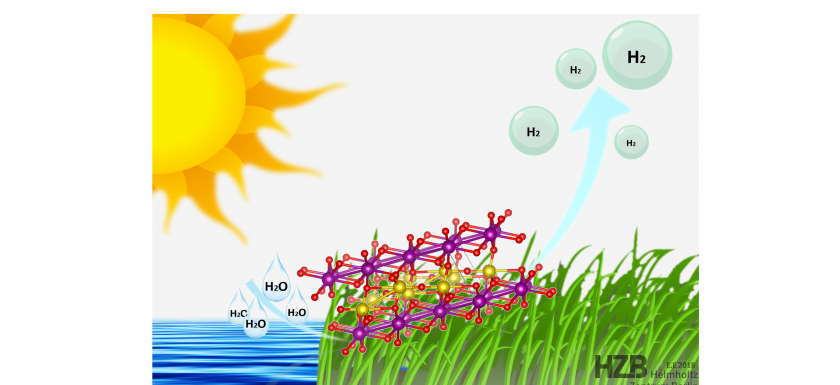
As a summer student at the HZB, I am working at the Institute for Solar Fuels on Artificial Photosynthesis research. In the project, I am taking part in, we aim to improve and characterize two materials, namely BaxMnyOz and MnxVyOz. By using Pulse Laser Deposition (PLD) as the synthesis method, our goal is to investigate the structure and photoelectrochemical properties of these materials by various methods and optimize them towards improving their solar-water-splitting efficiency.
|
|
|
This project and research at the Institute for Solar Fuels is based on the search for new light absorbing materials, which can harness the sun’s radiation to produce clean energy from the most abundant resource on earth, water (H2O). This has been on going ever since the first proof of concept in the early 1970’s by A. Fujishima and K. Honda.
Today, complex ternary metal oxides are at the research forefront as promising light-absorbing materials due to their abundance, favorable stability, and a potential to reach high efficiencies needed to achieve commercialization of the technology. BaxMnyOz and MnxVyOz are such material.
|
|
|
Both materials are semiconductors with an energy band gap suitable for absorbing sunlight and use the energy for water splitting. Both materials show promising results. These ternary oxides are special due to the ability to engineer their band gap, this allows us to find optimizations routes to increase efficiency.
What is Water Splitting? It is the electrolysis of water into Oxygen (O2) and Hydrogen (H2) by using energetically suitable light absorbing materials that convert light into electricity which drives the hydrogen and oxygen evolution reactions (HER and OER respectably). This is akin to the photosynthesis process in nature where the sun is used to convert water and carbon dioxide (CO2) to energy and O2 released.
Two weeks has already passed since the summer student program started and the project is well underway. I met incredible scientists from around the globe, all collaborating in the same field of research. This experience has me learning something new almost every day from theory and synthesis methods to new characterizing methods and new instruments. I am looking forward to the next several weeks to see what more will I learn, who will I meet and what the project will yield.

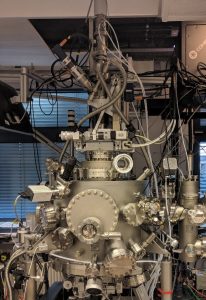
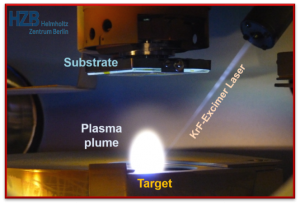
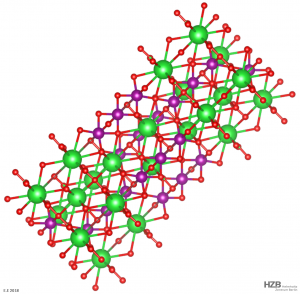
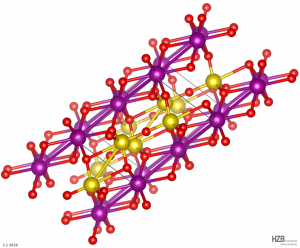
Dear Antonia, thank you for the detailed reply. We always hope to learn from nature and create something better than the original idea, in this case photosynthesis. Plants are very efficient in their energy consumption we humans as a culture are less efficient, however we strive to be and this is where science comes in. I would love to discuss this further with you.
Thank you very much.
Thank you very much.
Dear Julio, PLD is an interesting technique. You can achieve good homogeneous layers on flat substrates. For biobiomaterials I would say that it sounds interesting and you could get complex stoichiometry of thin films.
Thank you for your interest.
Dear Eliran, I would like to know more about the technique you are using (PLD). Working in my bachelor´s thesis, I have read some articles about the use of this technique in the field of biomaterials and it sounds promising.
Dear Eliran, thank you for your nice posts and the pictures. Just a hint from the workshop: What is the motivation and relevance of this research? This is always a good starting point to make readers interested and motivate them to take the time reading your post.
And:
Isn’t it amazing that photosynthesis in nature is not super efficient? Whereas artificial photosynthesis can tranform up to 19 percent of the solar energy into chemical energy, stored in hydrogen?
And by the way: How are you changing the bandgaps in these ternary metal oxides? Greetings, Antonia
Fascinating Insights !!
I hope one day this research becomes a practical reality..
All the best
Sounds like a fascinating research. Hope you get amazing reasults! Can’t wait to read the follow up..
May you be successful.